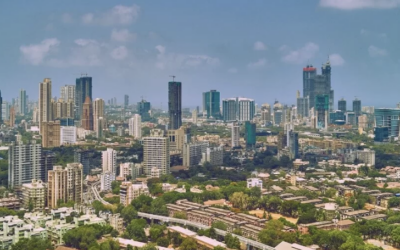A detailed report by the International Monetary Fund (IMF) predicts the Philippines will soon have the youngest country in Asia.
They also suggested the Philippines diversify its economy and enhance work productivity to maintain its status as one of the world’s fastest growing countries.
Favorable demographic trends are great for anyone investing in the Philippines, whether they’re individuals or businesses.
There are a few reasons why demographics are important. For starters, bigger countries are able to benefit from economies of scale. Multinational firms prioritize expansion into countries that have a large consumer market, for example.
Meanwhile, a high-birth rate combined with large-scale migration from rural areas into cities practically necessitates rising demand for real estate.
This leads to higher prices, and in turn, lots of opportunity for anyone buying property in the Philippines.
With that said, a rapidly growing population comes with some unique issues that must be solved.
The Philippines: Asia’s Youngest Country
Unfortunately, the full story about the Philippines’ demographic boom isn’t all good news.
“In the next 30 to 40 years, the Philippines is going to be the youngest nation in Asia. That’s a big opportunity. But that alone won’t be enough because a demographic dividend would need jobs. We have to create the jobs.” said Shanaka Peiris, IMF representative.
Indeed, several other economic issues in the Philippines are lurking below the surface. The country’s chronically high unemployment rate is arguably the most urgent out of them all.

The Philippines is primed to grow from its current population of 115 million to over 150 million by 2050. A big question remains though: will they be employed?
Unemployment is a Major Issue
Currently, the Philippines is ranked the second most populous country in Southeast Asia after Indonesia.
The nation rebounded from the latest economic crisis quicker than most other countries in the developing world, with its recent GDP expansion of 5.6% ranking alongside Asia’s highest.
High unemployment remains one of the biggest structural problems in the Philippines economy. While the rate has improved recently, it’s still excessive.
Granted, that’s a substantial an improvement compared to 7.3% about a decade ago in 2013.
Development in the private sector is the answer to the problem. According to Peiris. “We need the private investment to fall in line. We need the demographic dividend by creating jobs.”
Philippines Demographic Problems Aren’t a Deal Breaker
Nonetheless, the Philippines enjoys a better economic outlook compared to some other places in the region.
By comparison, a few Southeast Asian countries show a trend of continuous aging and are set to deteriorate over time.
Perhaps Thailand is the most unfortunate case with an average age of 41 despite the fact that it hasn’t even come close to breaching the middle income trap yet.
Several other countries in ASEAN that, at least presently, seem safe from a demographics angle will be under pressure within the next few decades.
In Malaysia, for example, the population of those aged 65 and older will triple from its current number by 2040.
Meanwhile, Vietnam’s average birthrate rapidly declined from 6.4 children per mother during the 1960s to barely above 2 per mother in 2023. They’ll soon face an aging crisis because of this.
The negative effects of an aging populace in these emerging markets will take a while to appear, yet they’ll likely surface within your lifetime.
By comparison, the Philippines will have the entire 21st century to reap the rewards from its demographically-driven boom. Yet they’ll need to continue creating jobs to solve an ongoing labor shortage.
The point here is: it’s better to enjoy the benefits of strong demographic trends in the first place than not at all.
Ultimately, the Philippines’ demographic dividend is a net positive and puts them in a far better position when compared to elsewhere.
Yet having the status of the youngest country in Asia also means dealing with a unique set of challenges.
If you’d like to invest in the Philippines and profit from its demographic dividend, you may be interested about our full guide to buying property in the country.







